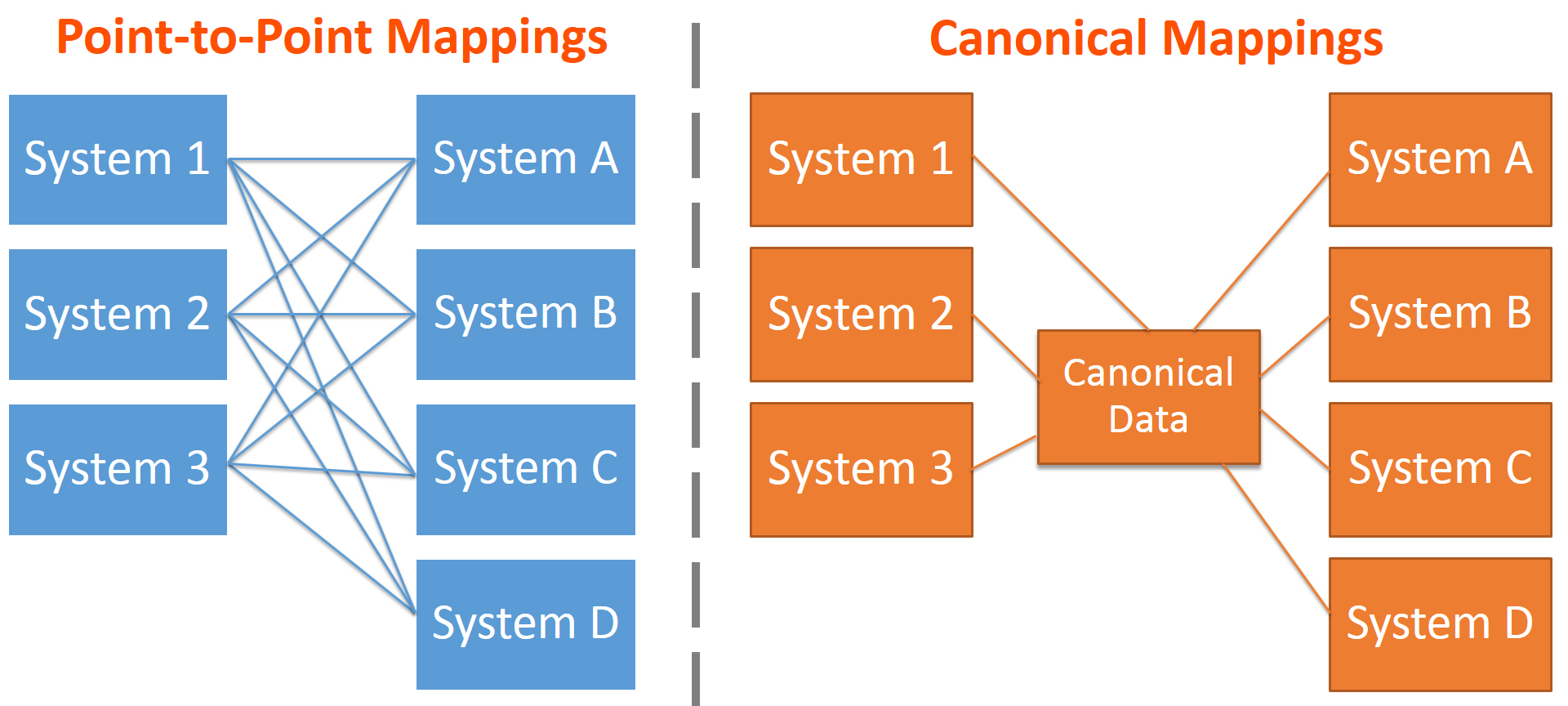Understanding the eMagiz CDM
In this microlearning, we will delve into the foundational concepts of the Canonical Data Model (CDM) within the eMagiz platform. We will walk you through its significance, how it simplifies data integration across systems, and how you can effectively use it within eMagiz to centralize messaging and ensure consistency across your integration landscape.
If you have any questions along the way, feel free to reach out to us at academy@emagiz.com.
1. Prerequisites
- Basic knowledge of the eMagiz platform
- Completed the Crash course Platform
2. Key concepts
Canonical data models are a type of data model that aims to present data entities and relationships in the simplest possible form to integrate processes across various systems and databases. More often than not, the data exchanged across various systems rely on different languages, syntax, and protocols.

3. The CDM in eMagiz
In eMagiz, you can model a CDM in the Design phase. Authorized users can make edits, and set up a generic data model that describes the entities that are used in the integration landscape. Each entity will have its unique name, and attributes can be added to define the required data types. The intent is to describe the data model so that there is an absolute definition of the model that can be interpreted by all users in the system. It can also act as a reference for compliance to the company's logical data model. Using associations the relations between entities can be described as well as the cardinality.
Once the CDM is defined, other users can then reuse this model to define CDM messages that are used in the 5-layered model as described in the Messaging introduction. These CDM messages define the parts of the data model that is used in the integrations realized, and may contain one or more entities and their associations. So that all data elements are defined in the same manner, types, and length.

4. Key takeaways
Core functions of the CDM:
- Centralized Messaging: The CDM serves as a central hub for defining and managing messaging across different systems, ensuring consistent communication.
- Structured Data Representation: It provides a clear, entity-based model for describing the content of messages, including data entities, attributes, and their relationships.
- Consistency and Clarity: By standardizing how data elements are defined (covering types, lengths, and associations), the CDM ensures and visualizes that all data exchanges are consistent and unambiguous.
- Enhanced Reusability: The CDM allows for the creation of reusable data structures and transformations, promoting efficiency and reducing redundancy across integrations.
5. Suggested Additional Readings
This video provides an explanation to the concept of CDM in the context of Messaging in eMagiz.
If you are interested in this topic and want more information on it please see the following links:
